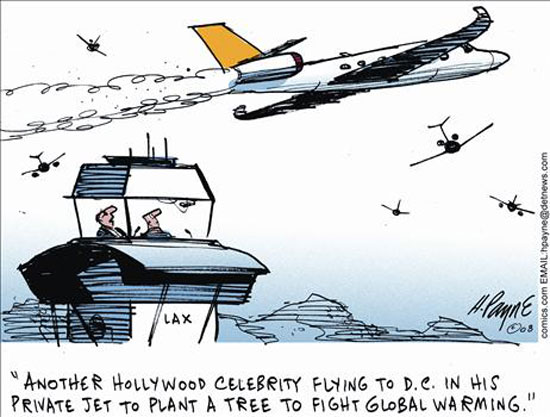An Exercise in Surrealism
Posted on November 12, 2018Marching to the Beat of Someone Else’s Drum
Another day begins. You fall into line with the other peripatetics, taking note of the meter upheld by the person in front of you, and the person in front of them, and the person in front of them. Perhaps today you’re impatient, the amorphous leader of the pack is unbothered to assess the needs of the trail of ants dedicatedly maintaining their gait, but you won’t step out of line. You’ve accepted your place, and to challenge it would only agitate the natural order. As you approach the check point, you rummage for your plastic token of access. This is your magic carpet: with it, your world is open, you can go anywhere (unbelievable sights, indescribable feeling, soaring, tumbling, freewheeling1). Without it, you’re moored to this place as you watch your comrades advance without you. But you’ve found it (phew). In an act of sacrifice, you offer up your precious token to the jagged-toothed mouth opening for you, inviting you to be swallowed by it. Before you know it you’re in a box, shoulder to shoulder with your cohort, in the bowels of the urban machine. You do your best imitation of a pencil alongside the other unsharpened pencils in a new pencil box– standing fully upright, your arms glued to your sides– and you feel the phone in the pocket of the person to your right vibrate. To your left, the smell of hour-old coffee on the breath of someone else. You’re close enough to another person to kiss them, but it would be unthinkable to even look them in the eye. Your experience with this inimitable group is nearing its end, and though you’ll do the same thing tomorrow, it occurs to you that you are but a pawn, interchangeable with any other body in the city’s constellation bodies.2 As the train pulls into the platform, you bid a dispassionate farewell to your fellow commuters and continue on with your day.
 3
3
Redlining the Wealthy
Tony Dunne and Fiona Raby posit that speculative design has the potential to invite us to reimagine both reality itself and our relationship to it.4 When viewing a banal activity like our daily commute through a theatrical lens, it becomes ever more apparent that we default to mindlessly participating in social contracts without questioning why. A turnstile is erected, an easily circumventable barrier, and we agree to pay $121 every month to cooperate with its intended use. It acts as a reminder that access is possible for only those who can pay for it. What if we operated within a model where we assigned monetary worth to the size of one’s carbon footprint, and that value could be applied to an MTA gift card? What would that look like and who would it include that is excluded by the current model? If we look at capitalism as an unfixable problem, rather than trying to redistribute wealth as its prevailing definition, we could attempt to “[change] our values, beliefs, attitudes, and behavior”5 to open up access to currently sidelined communities through imagining an alternative reality. Dunne and Raby might categorize this speculation as, “using design to open up all sorts of possibilities that can be discussed, debated, and used to collectively define a preferable future for a given group of people: from companies, to cities, to societies,”6 in this case, folks who can’t afford public transportation and a society deteriorating because of carbon emissions.
I won’t endeavor to propose how we might go about measuring each individual’s environmental impact and reducing it to a numeric value to be bartered for transit in approximately 700 words. However, imagine if we rewarded people for abstaining from air travel. According to the Washington Post, “nothing that we do pumps carbon dioxide into the atmosphere faster than air travel.”7 By shifting our attitudes about what merits exchangeable value, we might successfully bypass an impossible conversation about ways to improve our capitalistic system. In other words we might construct a different reality, a reality that benefits someone else, someone marginalized by capitalism. If a person cannot afford the $2.75 train fare, it is unlikely they are a patron of the aviation industry. And in a reality where a small carbon footprint is rewarded (or a large one is penalized– I haven’t decided yet; an alternative could require offenders of carbon pollution to pay a fine to those whose emissions are not as high), systemically poor communities acquiring a version of wealth becomes thinkable.
 8
8
If, as Dunne and Raby suggest, only one future cannot be conceived of because only one reality does not exist, we must look at our singular realities, our mundane practices, with a strangeness so we can begin to look at strange, speculative realities with a belief in their possibility.
A note to Jamer: I apologize for the stock photo, but because of the nature of the content of this post, a stock photo of unsharpened pencils seemed appropriate.
-ESF
___
- Lyrics to “A Whole New World.” Aladdin, 1994, metrolyrics.com/a-whole-new-world-lyrics-aladdin.
- This thought has been adapted from Donella Meadows. Meadows states, “Changing elements usually has the least effect on the system. If you change all the players on a football team, it is still recognizably a football team…. A tree changes its cells constantly, its leaves every year or so, but it is still essentially the same tree. Your body replaces most of its cells every few weeks, but it goes on being your body. The university has a constant flow of students and a slower flow of professors and administrators, but it is still a university.” The same bodies may not accompany you on your daily commute, but the majority of the bodies shuffling from place to place at 9am and 6pm belong to a similar population that has an income, a home, and represent a range of the lower-middle to the upper-middle class.Wright, Diana, and Donella H. Meadows. Thinking in Systems : A Primer, Taylor & Francis Group, 2009, pp. 16.
- https://www.dreamstime.com/stock-photography-unsharpened-pencils-image2431662
- Dunne, Anthony, and Fiona Raby. Speculative Everything : Design, Fiction, and Social Dreaming, MIT Press, 2013, pp. 161.
- Dunne, Anthony, and Fiona Raby. Speculative Everything : Design, Fiction, and Social Dreaming, MIT Press, 2013, pp. 2.
- Dunne, Anthony, and Fiona Raby. Speculative Everything : Design, Fiction, and Social Dreaming, MIT Press, 2013, pp. 6.
- Jack Miles, “For the Love of Earth, Stop Traveling,” The Washington Post, November 02, 2017, accessed November 11, 2018, https://www.washingtonpost.com/news/theworldpost/wp/2017/11/02/plane-pollution/?noredirect=on&utm_term=.360fca6676f4.
- https://scottthong.files.wordpress.com/2008/04/jettodcplanttree.jpg